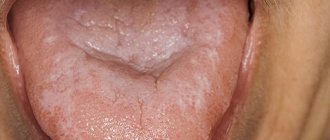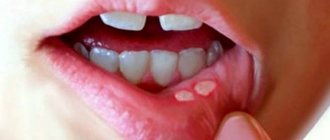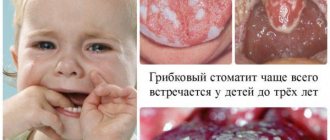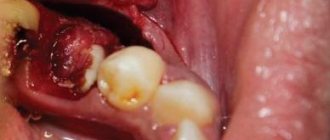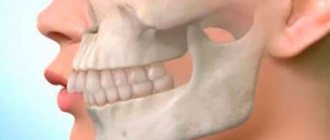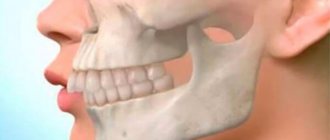Chronic stomatitis is a disease that is accompanied by repeated inflammatory processes of the oral mucosa. Many patients want to know what causes the development of chronic stomatitis. In the vast majority of cases, the development of this pathological condition is associated with a whole complex of various factors - both internal and external.
The most common form today is chronic aphthous stomatitis, which is diagnosed in 5% of cases among all diseases of the oral mucosa.
In our clinic you can get a free dental consultation!
Our doctors
18 years of experience
Baghdasaryan
Armen Evgenievich
Chief physician, dentist-orthopedist-therapist
Graduated from VSMA named after. N.N. Burdenko. Internship on the basis of MGMSU named after. A.E. Evdokimov in “General Dentistry”.
Clinical residency at the Moscow State Medical University named after. A.E. Evdokimov in “Orthopedics”.
More about the doctor...
5 years experience
Sadina
Ekaterina Vladislavovna
Dental therapist, surgeon
Penza State University Medical Institute, specialty “Dentistry”.
In 2016, she underwent professional retraining in the specialty “Therapeutic Dentistry” at the Moscow State Medical and Dental University named after A.I. Evdokimov.
More about the doctor...
8 years of experience
Arzumanov
Andranik Arkadievich
Dentist-orthodontist
Graduated from Moscow State Medical University. Internship - Moscow State Medical University at the Department of Orthodontics and Children's Prosthetics.
Residency at Moscow State Medical University at the Department of Orthodontics and Children's Prosthetics. Member of the Professional Society of Orthodontists of Russia since 2010.
More about the doctor...
Literature
- Aphthous stomatitis // Nurse/ No. 5. – 2015. – P. 21.
- Bulkina N.V. Chronic recurrent aphthous stomatitis: features of the clinical course and complex treatment // Saratov Medical Scientific Journal / Volume 7. - No. 1. - P. 281-282.
- Strakhova S. Yu., Drobotko L. N. Chronic recurrent aphthous stomatitis (lecture) // Regular issues of “RMZh” / No. 29. - dated December 27, 2006. — P. 2096.
- Volkov E. A., Butova V. G., Pozdnyakova T. I., Dzugaeva I. I. Clinical recommendations (treatment protocol) for chronic recurrent aphthous stomatitis // Russian Dental Journal / No. 5. – 2014. – P. 35-49.
- Galizina O. A. Main aspects of the occurrence, clinical manifestations, treatment and prevention of chronic recurrent aphthous stomatitis // Russian Dental Journal / No. 18(6). – 2014. – P. 39-42.
- Chemicosova T. S. On the prevention of exacerbations of recurrent aphthous stomatitis // Kazan Medical Journal / volume 84. - No. 4. - 2003. - P. 267-269.
- Association of General Practitioners (Family Doctors) of the Russian Federation Clinical recommendations for general practitioners Stomatitis // 2014.
- N. N. Bazhanov Dentistry // ed. Moscow GEOTAR-MED / 2002. – P. 99-100.
- Instructions for use of the drug HEXORAL® aerosol // Reg. number P N014010/01 //
- Instructions for use of the drug HEXORAL® solution // Reg. number P N014010/02 //
- Instructions for use of the drug HEXORAL® TABS // Reg. number LSR-002626/07 //
- Instructions for use of the drug HEXORAL® TABS CLASSIC // Reg. number P N015976/01 //
- Instructions for use of the drug HEXORAL® TABS EXTRA // Reg. number LSR-004122/09 //
Causes
It is customary to identify various causes of chronic stomatitis in adults. They determine the form of the disease:
- The aphthous form can be caused by E. coli, streptococci, or a bacterial allergic reaction. There is a connection with autoimmune pathologies, as well as disruptions in the gastrointestinal tract and endocrine system;
- The candidiasis form develops with long-term use of antibacterial agents when infected with fungi of the genus Candida;
- The herpes form occurs due to the presence of the herpes simplex virus in the body with decreased immunity;
- Prosthetic chronic stomatitis in adults can be caused by various factors: an allergic reaction to the components from which the prosthesis is made; insufficiently good hygiene of dentures; frequent damage to the mucous membrane due to improperly fitted, installed or faulty dentures;
- Vincent's stomatitis can be provoked by spindle-shaped bacillus and Vincent's spirochete against the background of decreased immunity.
We cannot ignore the factors that provoke the development of chronic recurrent stomatitis. These include:
- unbalanced diet;
- taking medications;
- frequent stress;
- acute respiratory diseases;
- hypothermia;
- vitamin deficiency;
- irregular and insufficiently good oral hygiene;
- advanced stages of caries;
- ear, nose and throat infections.
Causes
To date, the exact etiology of aphthous stomatitis has not been fully identified. The main cause is considered to be a disruption of the immune system (uncontrolled activation of lymphocytes and neutrophils, which begin to destroy epithelial cells). At some point, the immune system ceases to recognize a number of components contained in saliva, which provokes the appearance of characteristic ulcers. However, this is far from the only reason. The aphthous form of stomatitis occurs under the influence of other factors:
- genetic predisposition
- immune system diseases
- gastrointestinal diseases
- neutropenia, Behcet's syndrome
- allergies to sodium lauryl sulfate, citrus fruits, dairy products, grains
- viruses and pathogenic bacteria (staphylococci)
- mucosal injuries
- avitaminosis
- pregnancy
- psychological disorders
Clinical manifestations
The symptoms of chronic stomatitis directly depend on the form of the disease
| Type of acute stomatitis | Clinical manifestations |
| Atrophic |
|
| Vincent |
|
| Herpetic |
|
| Prosthetic |
|
How to treat stomatitis
Whatever the form of stomatitis, treatment always begins with a visit to the dentist.
He makes a diagnosis and prescribes treatment. If necessary, you may need to consult other specialists, such as a gastroenterologist, immunologist or allergist. Depending on the form of stomatitis, the doctor examines the patient and listens to complaints or prescribes laboratory tests, for example, bacterial culture of a smear or skin scraping, as well as a PCR study to determine the causative agent (herpes virus, fungus, etc.). Treatment of stomatitis usually occurs with local remedies and includes:
- normalization and maintenance of high-quality oral hygiene
- spot treatment of ulcers with drugs with antimicrobial, antiviral or antifungal action
- pain relief with anesthetics
- reducing swelling and redness with anti-inflammatory drugs
In addition, part of the therapy is a special diet that will help reduce inflammation and will not irritate the mucous membrane.
Diagnostics
The most important role in diagnosing a disease is to establish the causes of its development. It is they who determine the future tactics of treating inflammatory processes. In order to achieve the desired result, make a smear from the surface of the ulcer, and also carry out:
- study of ulcerative lesions;
- bacteriological examination;
- checking the plasma chain reaction of scrapings.
Prevention of HRAS
Prevention should be aimed at monitoring the state of health in general, treating chronic diseases, and it is necessary to undergo regular examinations regarding the existing disease. Hardening and strengthening the immune system have a good effect. You need to visit the dentist to monitor your oral health once every 3-4 months to ensure timely detection of relapses. You should avoid using toothpastes, hygiene products with dyes or identified allergens. Taking antibiotics should only be done under the supervision of a doctor. It is recommended to avoid strong psycho-emotional stress and regularly carry out wet cleaning of the premises.
It is worth paying attention to Tantum® Propolis .
Tantum® Propolis
Propolis has an immunostimulating effect, promotes healing, vitamin C, which is part of it, is responsible for regeneration, participating in the synthesis of collagen.
Propolis also has antiviral and antifungal effects. Therefore, vitamin therapy Tantum® Propolis is an effective means of preventing stomatitis12 Find out more
Treatment
In order to eliminate chronic stomatitis, professional oral hygiene, sanitation of infectious foci and local applications are carried out. As for the specific tactics used for one form or another of the disease, they are presented in the table below
| Type of acute stomatitis | Treatment options |
| Vincent |
|
| Herpetic |
|
| Traumatic |
|
Treatment of aphthous stomatitis
Aphthous stomatitis in adults and children is treated according to the same scheme, the only difference is that some drugs are contraindicated for children, so recommended analogues are used. Treatment is conservative and aimed at eliminating the external manifestations of the disease and causative factors.
Local therapy
Antiseptic rinses and anti-inflammatory gels are used. For speedy healing and epithelization of ulcers, laser therapy, electrophoresis, and treatment of affected areas with Solcoseryl are recommended.
Antihistamines
Recommended if one of the causes of aphthous stomatitis is an allergic reaction. Read more about allergic stomatitis.
Immunomodulators and glucocorticoids
Drugs used to enhance immunity: Prednisolone, Lysozyme, Cyclosporine, Cyclophosphamide and their analogues.
Vitamins
It is recommended to take vitamin complexes containing vitamins C and B12.
Where to contact?
You can get treatment for chronic stomatitis at the Good Hands dental clinic. Our specialists are well aware that frequent relapses of the disease can reduce the patient’s quality of life and can provoke the development of periodontitis and benign and malignant oral tumors. They use individual treatment tactics that allow you to achieve good results, make the treatment effective and painless. You can schedule a free consultation with us and find out all the necessary information right now by filling out an application on our website or calling us by phone.
Course of the disease
Acute aphthous stomatitis often begins acutely and often against the background of an acute respiratory infection or sore throat1. Body temperature rises, lethargy, weakness, headache, and muscle aches appear8. Against this background, single or multiple aphthae appear on the oral mucosa8, salivation sharply increases, and bad breath appears1. The number of aphthae and their depth and healing time depend on the severity of the disease1.
Chronic aphthous stomatitis can occur in mild or severe forms1,3,4, which can be determined by a dentist.
Up to contents
Diagnosis of stomatitis
Usually, a visual examination of the patient is sufficient to make a diagnosis. If stomatitis is suspected, which is the result of diseases of the internal organs, consultations with highly specialized specialists are prescribed.
If the disease is of infectious origin, the patient is sent for laboratory tests:
- taking a swab from the mouth to determine the type of pathogens;
- blood test to detect antibodies to pathogens of internal organ infections;
- ELISA or PCR (polymerase chain reaction) is a study of biomaterial to identify pathogens of infectious diseases.
If stomatitis is accompanied by a significant deterioration in health or elevated body temperature, it is necessary to undergo general blood and urine tests. Diagnostics allows you to assess the general condition of the body and identify pathologies that cause inflammatory processes in the oral cavity.
Forms of stomatitis
The general word “stomatitis” refers to inflammation, which can have a different course and arise for various reasons. There are several types of disease:
- Catarrhal.
- Aphthous.
- Candida.
- Herpetic (or herpes).
- Allergic.
Catarrhal
The catarrhal form of stomatitis is the most common; it is characterized by pain and hyperemia of the mucous membrane. Its color changes, becoming more red. Often its surface is covered with a whitish or yellowish coating. Your gums may bleed and your mouth may smell bad.
Aphthous
The aphthous form of stomatitis often becomes chronic, then it begins to appear regularly - several times a year. When it occurs, small ulcers covered with plaque are formed on the mucous membrane - aphthae. Usually, aphtha “warns” of itself by redness, burning and a slight bulge at the site of its future appearance. The erosions themselves are light in color with a red edge; when you press on them, pain is felt. In mild cases, only 1-2 erosions may occur, which disappear within a week. In severe cases, there are much more rashes, healing is more difficult and scars may remain in place of the aphthae.
Candida
Fungi of the genus Candida “love” to settle on mucous membranes, including the oral cavity. This often happens after long-term use of antibiotics, due to disruption of microflora and decreased immunity. The result is candidal stomatitis, which is manifested by burning of the mucous membrane, its redness, and the presence of a whitish coating in the mouth. Often these symptoms are accompanied by a feeling of unpleasant taste, or even loss of taste. Stomatitis often occurs in newborns who are still feeding on milk, and in adults who constantly use removable dentures .
Herpetic (or herpes)
Herpetic stomatitis is similar to aphthous stomatitis. It is also characterized by the appearance of light-colored ulcers with a red border and a film on top. And it can also appear periodically, since the herpes virus - its cause - remains in the body without being completely eliminated from it. At the very beginning of the disease, the mucous membrane acquires
red color and becomes very sensitive. Normal impacts on it can cause pain. The difference between aphthous and herpes stomatitis is that during the latter, vesicles 3–5 mm in size appear, which break through and form erosions. This process is very painful. The number of such bubbles depends on the severity of the disease. In severe cases, the temperature often rises.
Allergic
Allergic stomatitis is manifested by noticeable swelling of the mucous membrane, profuse salivation and itching in the mouth. Such stomatitis in children can occur when a new product appears in the diet, then the itching is especially intensified after eating. In older age, the cause is often a decrease in immunity.
In all of these forms, stomatitis begins with redness and increased sensitivity of the mucous membrane. At this stage, you cannot independently determine what the further development of the disease will be. Therefore, if the gums become red, enlarged, and begin to react painfully to food and even brushing, this is already a reason to consult a dentist. An experienced doctor will be able to determine the type of disease after examining and talking with the patient.
What is stomatitis
Stomatitis can be either an independent disease, which includes several varieties, or a symptom of another, more serious pathology. All stomatitis is characterized by inflammation of the oral mucosa. This is a fairly common problem that can occur repeatedly and in some cases be transmitted from the sick person to other people. There are no tests for the presence of stomatitis; the doctor determines this diagnosis based on examination data and the patient’s complaints. A smear can be taken afterwards to determine the causative agent of the disease. Having made conclusions, the specialist will give recommendations on how to treat stomatitis.


